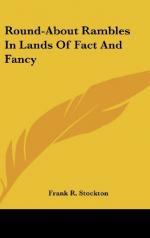This was pretty rough sport, for the combatants fought as if their lives and fortunes depended upon the victory, and although they did not often seriously injure one another, there must have been many a sore head and bruised leg and arm after the battle was over.
Marshal Saxe knew all about fighting, and on this occasion he declared, that if two real armies should engage with as much fury as these young fellows on stilts, the battle would be a butchery.
At another time, when the Archduke Albert came to Namur, the citizens had one of these stilt-battles, and it proved a very profitable one to them. Before the fight began, the governor of the city promised the Archduke to show him a battle between two bodies of men, who would be neither on horseback nor on foot; and when the engagement was over, Albert was so much pleased that he gave the town the privilege of being forever exempt from the duties on beer.
As the good folks of Namur were nearly as good at drinking beer as they were at walking on stilts, this was a most valuable present for them.
Things are different in this country. It is said that in 1859 a man walked across the rapids of the Niagara river on stilts, but I never heard of any of his taxes being remitted on that account.
DRAWING THE LONG BOW.
[Illustration]
When a man has a bow and arrows as long as those used by some of the natives of Brazil, so that he has to lie down on his back, and hold the bow with his foot when he shoots, he may well be said to draw a long bow, but it is not of these people that I now intend to speak. Without describing any particular school of archery, I merely wish to give a few instances where “the long bow” has been drawn in words, about feats with the bow and arrows.
This expression, “drawing the long bow,” does not always mean that a falsehood has been told. It often refers to a very wonderful story, which may be true enough, but which is so marvellous that it requires a firm trust in the veracity of the narrator for us to believe it.
So now let us see what long bows have been drawn about bows and arrows.
Such stories commenced long ago. The poet Virgil, in the “AEneid,” tells of four archers who were shooting for a prize, the mark being a pigeon, tied by a cord to the mast of a ship. The first man struck the mast with his arrow, the second cut the cord, and the third shot the pigeon while it was flying away. There now being nothing for the fourth archer to shoot at, he just drew his bow, and sent his arrow flying towards the sky with such velocity that the friction of the air set the feathers on fire, and it swept on, like a fiery meteor, until it disappeared in the clouds.
It would be very hard, even in this progressive age, to beat that story.
The Greeks could tell tall stories, too, of their archers. An historian, named Zosimus, tells of a man who shot, at the same time, three arrows from the same bow at three different targets, and hit them all! It is to be hoped that his histories contained some things easier to believe than this.




